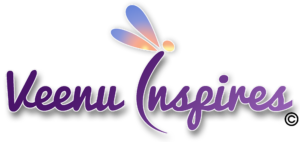Tony Robbins Parenting: How 18+ Years in the Robbins Environment Shaped the Way I Coach Families
If there’s one thing that’s shaped me not only as a coach, but as a parent…It’s the 18+ years I’ve spent training inside the Tony Robbins environment. As a trainer for Robbins Research International, I’ve had the privilege of learning and applying life-changing strategies to help people grow, lead, and transform.
But here’s what made all the difference for me: I started applying those strategies at home.
I didn’t just leave the tools in the event room. I brought them to the kitchen table, the car rides, the tough conversations, and the bedtime routines. I tried the tools with my own kids. Then I started helping other parents do the same.
What happened next was nothing short of transformational…
Now, as The Parent-Child Whisperer™, I help families bridge the gap between parents and children. I guide moms and dads through the process of reconnecting with their kids, creating more calm in the chaos, and building trust and communication that actually lasts.
This isn’t traditional parenting and it’s not about perfection. It’s about leading with emotional intelligence, being intentional, and knowing how to shift your energy and your words in the moments that matter most.
Here’s how I do it…
Regulate Yourself Before You Try to Regulate Your Kids
This is always the starting point.
One of the biggest lessons I’ve learned from years in the Robbins environment is this: your emotional state drives your results. If you’re showing up frustrated, frazzled, or reactive it’s going to impact how your kids respond.
As parents, we often try to control or “fix” our kids’ behavior, when what’s really needed is a shift in us.
In my coaching, I help parents recognize their own emotional patterns and learn how to regulate in real time whether that means deep breathing, changing body posture, shifting focus, or pausing before reacting. These may sound like small steps, but they make a huge impact.
Because when you change the energy you bring into a moment, the moment changes and so does your child’s response.
Connection Before Correction
Kids don’t want to be managed. They want to be understood.
One of the simplest, most powerful shifts I teach families is to lead with connection not control. And this isn’t about letting your child “get away” with things. It’s about helping them feel safe enough to listen, reflect, and grow.
When a child feels seen and supported, they’re more open to guidance. Period.
That might mean saying:
- “Help me understand what you were feeling when that happened.”
- “I can tell something’s off. Want to talk about it?”
- “You’re not in trouble—I just want to work through this with you.”
This kind of presence builds trust. It creates space for real communication. And from that space, discipline becomes more about teaching and less about punishing.
The “Think, Feel, Do, Have” Method (Credit: Joseph McClendon III)
One of the most transformational tools I use with both kids and parents is a concept I learned from Joseph McClendon III, a world-class neuropsychologist and longtime contributor in the Robbins world.
It’s called: Think → Feel → Do → Have
It helps people of all ages connect the dots between their mindset, emotions, actions, and outcomes.
Here’s how it works:
| THINK – What are you thinking right now? |
| FEEL – How does that thought make you feel? |
| DO – What action are you taking from that feeling? |
| HAVE – What result are you getting because of that action? |
Then I flip it. We walk it backwards:
| What do you want to HAVE? |
| What do you need to DO to get that? |
| What would you need to FEEL to take that action? |
| And what would you need to THINK to create that feeling? |
This tool has helped kids shift from meltdowns to self-awareness. It’s helped teens own their mindset and actions. And it’s helped parents stop reacting and start responding. When a family starts speaking this shared emotional language, everything begins to shift.
Speak to Who Your Child is Becoming
Something I saw again and again throughout my Robbins training years is this: People act in alignment with who they believe they are.
That’s why one of the most powerful tools in my parenting method is helping moms and dads speak to their child’s identity not just their behavior.
Instead of saying, “You’re always so messy,” try: “You’re learning how to take care of your space.”
Instead of “You’re so dramatic,” try: “You’re someone who feels things deeply and that’s powerful. Let’s learn how to work with those feelings.”
Kids take in what you say about them. So why not use your words to build them up, rather than box them in? Over time, the labels you give them become beliefs… and those beliefs shape their future.
Parenting isn’t about being perfect. It’s about being present.
If there’s one thing I want you to take away from this, it’s this:
You don’t need to have all the answers.
– Veenu keller
You don’t need to do it like your parents did.
You don’t need to do it like anyone else does.
You just need to be willing to grow.
That’s what this work is about. As The Parent-Child Whisperer™, I help parents become calm, connected, and confident leaders in their homes. And I help kids feel safe, seen, and supported so they can step into who they’re meant to be.
So if you’re feeling overwhelmed, disconnected, or just ready to try something new… this is your invitation.

